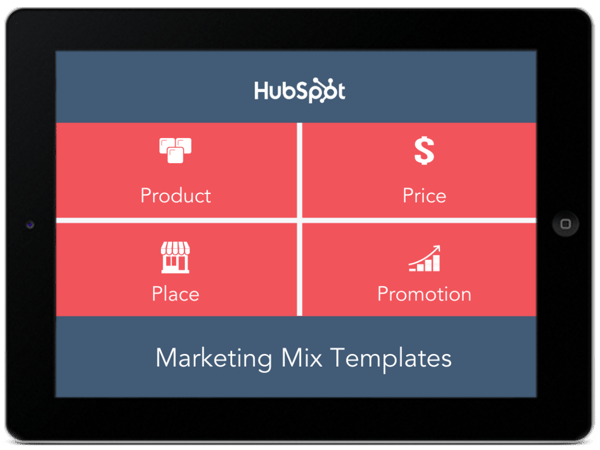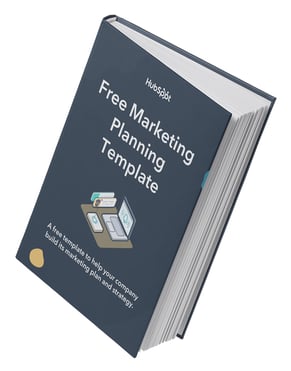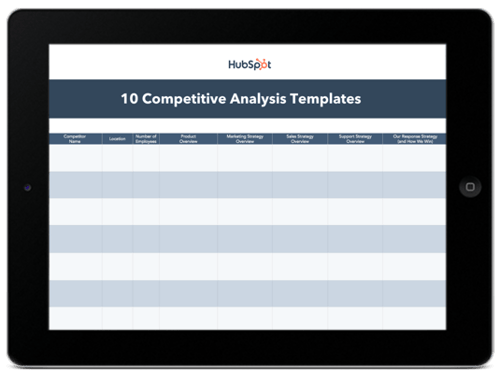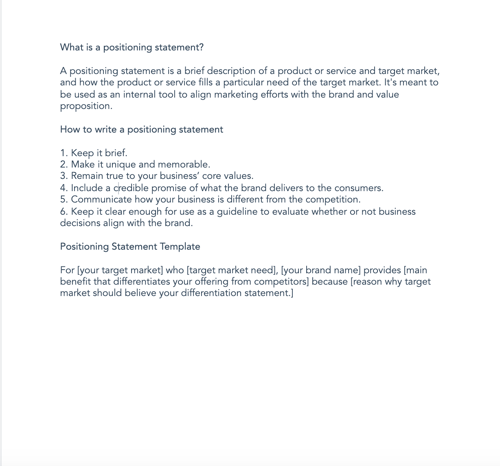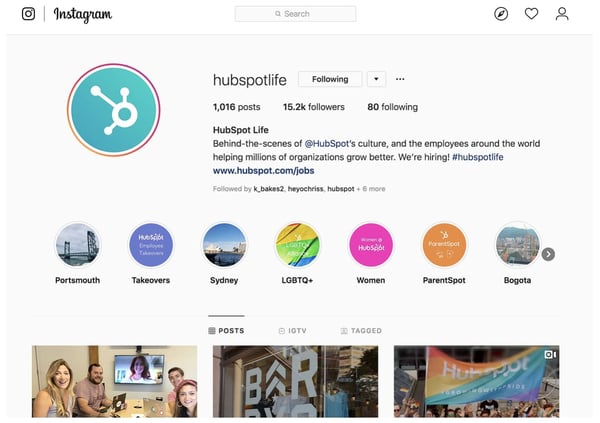Effective B2B marketing is difficult to get right. Between creative demands, budget limits, and channel decisions, marketers have a lot to juggle when developing their marketing strategy.
Effective B2B marketing is difficult to get right. Between creative demands, budget limits, and channel decisions, marketers have a lot to juggle when developing their marketing strategy.
The biggest determinant of effective marketing, however, is your audience.
If you’re not properly targeting your buyer persona, your promotions and advertisements will likely fall on deaf ears. You might as well not be marketing at all.
Where target audiences vary the most, though, is between individual consumers and businesses. Some companies serve individual shoppers, while others cater to companies and organizations.
Marketing to businesses is very different from marketing to individual consumers. That’s why an entirely different marketing method — B2B marketing — exists, and that’s why we built this guide.
By the end of this article, you’ll have a better understanding of B2B marketing, the most effective B2B marketing strategies, and how you can tap into and convert your business audience. Plus, the trends you can expect in the B2B space in 2023, according to new research plus expert tips.
What is B2B?
B2B stands for “business-to-business,” which refers to a business model where businesses sell products and services to other companies as opposed to consumers.
If you’re a new marketer in the B2B space, or a small B2B business owner learning the ropes, B2B marketing can seem new and strange, but not to worry — you’ll soon learn it’s not so different from typical consumer marketing, and we’ll go over everything you need to know so you can create an effective B2B marketing strategy.
The purpose of B2B marketing is to make other businesses familiar with your brand name, the value of your product or service, and convert them into customers.
HubSpot is an example of a company that engages in B2B marketing. HubSpot’s customers are other businesses, not individual consumers. Therefore, all of our marketing efforts can be classified as B2B.
B2B vs B2C Marketing
B2B and B2C (business-to-consumer) marketing are very different. B2B and B2C marketing differ in their respective strategies and applications, as well as in their audiences and how they communicate with them.
B2B marketing targets the needs, interests, and challenges of individuals who are making purchases on behalf of, or for, their organization (rather than for themselves), thus making the organization the customer.
Here are a few examples of B2B companies:
-
A coworking space that leases office spaces to remote teams and freelancers (like Spaces)
-
An on-demand order fulfillment, warehousing, and screen printing service (like Printful)
-
A marketing software company that sells social media management tools, lead generation software, and other marketing tools to businesses and organizations (like HubSpot!)
B2C marketing targets the needs, interests, and challenges of individual consumers who are making purchases on behalf of, or for, themselves, thus making the individual the customer. Here are a few examples of B2C companies:
-
An e-commerce company that sells office supplies to remote or self-employed individuals (like Poppin)
-
A store that sells t-shirts and other clothing and accessories (like Target)
-
A music platform that sells streaming subscriptions (like Spotify)
Take a look at this chart comparing B2B and B2C customers.
| for b2b marketing | for b2c marketing | |
| Goal | Customers are focused on ROI, efficiency, and expertise. | Customers are seeking deals and entertainment (which means marketing needs to be more fun). |
| Purchase Motivation | Customers are driven by logic and financial incentive. | Customers are driven by emotion. |
| Drivers | Customers want to be educated (which is where B2B content marketing comes in). | Customers appreciate education but don’t always need it to make a purchase decision. |
| Purchase Process | Customers like (if not prefer) to work with account managers and salespeople. | Customers like to make purchases directly. |
| People Involved in Purchase | Customers often have to confer with decision makers and other members of their chain of command before making a purchase decision. | Customers rarely need to confer with others before making a purchase decision. |
| Purchase Purpose | Customers make purchases for long-term solutions, resulting in a longer sales cycle, longer contracts, and longer relationships with companies. | Customers aren’t necessarily looking for long-term solutions or long-term relationships. |
As much as they differ, though, B2B and B2C also intersect in many ways. While Poppin sells office supplies to remote or self-employed individuals, they also design corporate office spaces and branded supplies.
On the flip side, Printful not only offers order fulfillment and warehousing to businesses; they also fill e-commerce printing orders for individuals.
As distinct as the B2B and B2C marketing audiences can be, B2B marketers can always learn from B2C campaigns, too.
B2B Marketing Strategies
As I said above, marketing depends on its audience. While B2B and B2C marketing vary, not every piece of B2B marketing material is alike, either.
In this section, we’ll talk about various B2B marketing strategies you can implement to reach your specific business audience. Some of these strategies are preparatory, such as identifying your audience, while others are ready to be executed, such as creating a B2B website. Let’s get started.
1. Understand the B2B buyer’s journey.
Before we dive into actual strategies you can implement, it’s important to understand the B2B buyer’s journey. This piece of information will help you create and implement marketing strategies that meet prospects at every stage of their purchase process.
Because of the higher price point of B2B products, B2B sales cycles tend to be a lot longer than B2C cycles. Nurturing these prospects via marketing takes a similarly long time, too, and you must use specific tactics at every stage to drive them toward a purchase decision or a demo request.
In other words: B2B marketing is not as easy as setting up ads on Instagram and hoping for clicks. (We wish! That can work, however, in conjunction with other strategies.)
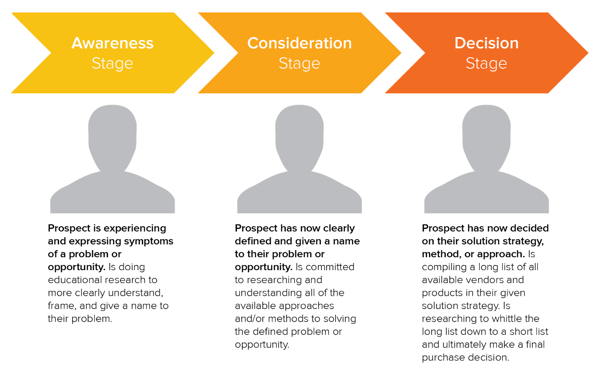
The B2B buyer’s journey is divided into three stages:
-
Awareness Stage: The prospect has become aware of a problem and begins educating themselves.
-
Consideration Stage: The prospect researches solutions for their new problem.
-
Decision Stage: The prospect is ready to make a purchase or formally begin a buying process.
After understanding the buyer’s journey, take this opportunity to create a customer journey map for your company — or, if you’re a new marketer at a B2B company, asking for one for reference.
A customer journey map is a customized version of the buyer’s journey that shows how your brand interacts with prospects during each phase. When you have that information, you can understand which marketing strategies, such as content marketing, will be most effective at each stage.
2. Identify your target market and target audience.
Now that you have a strong understanding of the buyer’s journey, it’s time to begin understanding who you’re marketing to specifically. Who is taking the buyer’s journey and purchasing your products? You get to decide — and it all begins by identifying who they are.
First up, define your target market. For B2B companies, we first recommend identifying your target companies with firmographic data such as:
- Company size, i.e small, medium, or enterprise
- Company region or location, i.e North America, South America, Africa, or specific countries and regions
- Company industry, i.e healthcare, fintech, or SaaS
- Number of employees
- Revenue
Then, define your target audience — that is, the specific human prospect who is looking for your brand’s products or services. Remember, you’re not marketing to other companies, you’re marketing to people who work at that company.
You can use demographic and psychographic data to identify individual prospects you’ll be marketing to. This may include their:
- Age
- Location
- Gender
- Education level
- Job title
- Behaviors
- Habits
- Beliefs
This information will help you create buyer personas and customer profiles, which in turn will help you understand how they make purchase decisions and which marketing channels they’re more likely to use.
For instance, if you’re targeting an entry-level employee, ages 22-26, at a small business in North America, you can likely use social media to reach them effectively.
3. Choose your marketing mix (or the 4 Ps of marketing).
Now that you’re armed with your buyer’s firmographic, demographic, and psychographic information, it’s time to start building a B2B marketing strategy that’s tailored specifically to them. Start by defining your marketing mix, or the 4 Ps of marketing:
- Product: What product you sell
- Price: How much the product costs
- Place: Where the product is sold
- Promotion: Where customers will find out about the product
Defining your 4 Ps is an excellent precursor to creating a more extensive marketing strategy. It marries all of the information you’ve recently found about your potential customers with the information you already know about your own product.
That will empower you to create a more effective strategy than if you jumped right into tactics and execution.
Featured Resource: Marketing Mix Templates
Click here to download the templates for free.
4. Create a B2B marketing plan and a marketing strategy.
Once you’ve defined your marketing mix, you can dive in even more deeply by creating a marketing plan and a marketing strategy. A marketing strategy marries market conditions with your company’s goals, and a marketing plan provides an actionable roadmap with specific channels and metrics.
What’s most important is outlining your own company’s summary and target markets, then deciding where you’ll promote your company. The thing is, it’s all too easy to choose specific strategies, like social media marketing and content marketing, without a strategic approach. That can easily lead to overspending in the wrong areas.
To create a marketing plan and strategy, we recommend starting with a template.
Featured Resource: Free Marketing Plan Template
Click here to download HubSpot’s free Marketing Plan Template.
Using this template, you’ll be able to compile all the information you need to choose the right B2B marketing channels for your company. You’ll be able to lay out your:
- Business Summary and Initiatives
- Target Market
- Market Strategy
- Budget
- Marketing Channels
- Marketing Technology
In this list, we could have easily shared specific marketing tasks you can do, such as creating online content or publishing short videos. And while these things will likely be a worthy use of your time, it’s more important to spend your time strategizing to minimize marketing costs and increase your ROI.
Strategizing is the core of your B2B marketing strategy — not implementing specific tactics such as blogging or SEO. Those will come later once you have defined the big picture.
5. Cover all of your B2B marketing bases, such as launching a website.
It’s time to dive into the more tactical aspects of your B2B marketing strategy by ensuring all of your marketing bases are covered. But we don’t want to dive too deeply yet; this is about nailing down the basics. The “basics” will vary per industry; for instance, in a more traditional vertical, you might rely less on your website and more on industry events.
That said, you want to ensure your B2B company has covered most of the following things (click on each one for a checklist to run through):
- Launching a website
- Creating and maintaining your social media profiles
- Starting an email marketing newsletter
- Signing up for industry events and conferences
No matter which B2B industry you’re in, and regardless of your audience type and age, these things will likely benefit you. Later, we’ll cover specific types of B2B marketing that you can integrate under each of these strategies. But here’s a good introduction:
- Strategies for your website: Content marketing, blogging, SEO
- Strategies for your social media profiles: Social media marketing, paid social media, short form video marketing
- Strategies for your email marketing newsletter: Email marketing, lead nurturing
- Strategies for industry events and conferences: Event marketing, trade show marketing
6. Run a competitive analysis.
To choose your specific marketing strategies even more strategically, carry out a competitive analysis.
Scope out the market and see which businesses are marketing to your target audience. Learn what they’re currently doing — do they have a website? A presence on a specific social media platform, such as LinkedIn? Things to be on the lookout for when inspecting competitors are:
- Competitor product offerings
- Competitor sales tactics and results
- Competitor marketing content and social media presence
Featured Resource: 10 Competitive Analysis Templates
Getting a general overview of these items can help you recognize your competitors’ strengths, weaknesses, opportunities, and threats — otherwise known as a SWOT analysis. Once you understand where they stand, you can better compete with them and choose the best channels.
If none of your competitors are on Instagram, for instance, then Instagram marketing may not be a good strategy to pursue (or, at least, you should test it out first before investing too many resources in it).
7. Determine your brand positioning.
Next, define your brand positioning in the market. This statement is the who, when, why, and how of your brand identity — or the way your brand is perceived through the eyes of the customer.
This will help you cultivate a consistent brand image, regardless of the marketing channels and tactics you use.
Devise a brand positioning statement that your team and prospective customers can believe in, and you’ll be ready for the next step.
Featured Resource: Positioning Statement Templates
8. Explore marketing channels to use.
By now, you’ve likely run across the different types of marketing channels your competitors use successfully, and the channels they haven’t taken advantage of. You’ve also likely gotten an idea of what you want to do based on your big-picture strategizing so far.
With the previous steps completed, you’re ready to diversify your B2B marketing portfolio and reach the businesses you need to. Depending on your customer segments and competitor analysis, you can now explore channels, strategies, and tools to optimize your leads and customer funnels.
Next up, let’s look at the types of B2B marketing you can implement now that you’ve created your overall strategy.
Types of B2B Marketing
The following categories are B2B marketing channels bound to connect you to your target audience.
B2B Email Marketing
Email marketing is a tried and true method of reaching both individual consumers and business customers. Most B2B marketers use email — are you one of them? You should be. Emails lead to engagement, which turns subscribers into leads … and then customers.
Download our guide to optimizing email marketing for conversions and learn how to grow your email list, ensure deliverability, and increase engagement.
Unlike B2C customers who respond best to emotions and entertainment, B2B customers look for logic and positive ROI. Essentially, they’re asking themselves, How can your business help my business grow? Because of this, your email marketing must consistently resonate with your business customers and focus on things that matter to them — like time, money, and resources.
Email marketing is also a powerful vehicle for sharing your brand’s content. Many B2B companies use email newsletters as part of their content marketing program, and the B2B marketers we’ve spoken to say these newsletters are most critical to their content marketing success.
With the constant barrage of emails flooding our inboxes today, it’s more important than ever to create and send out effective marketing emails.
B2B Email Marketing Best Practices
-
Write enticing subject lines. Think about your email subject lines as a Netflix trailer — if you can’t hook your audience with a two-minute clip (or, in this case, a few dozen characters), don’t expect them to open and watch (or read) the whole thing. We recommend spending almost as much time on your email subject lines as you do on the emails themselves.
-
Stick to one call-to-action (CTA) per email. If you think the number of emails you receive is a lot, take a look at the CTAs in those emails … some are packed with two, three, and sometimes up to 10 different CTAs. Don’t make this mistake, which can leave your recipients’ heads spinning, asking “What should I click on first?” and ultimately clicking on nothing. With one CTA per email, you allow your audience to focus on your email content and ultimately one action … a welcome reprieve from today’s frequent decision-making and analysis paralysis.
-
Segment your email to reach the most relevant audience. Not every email you send will be appropriate for everyone on your list. Your subscribers may be at different stages of the buyer’s journey or be seeking different solutions. That’s where email list segmentation comes into play. Not only does this help you relate to your audience better, but it gives your emails that personal feel that says “Hey, I’m listening and I know what you’d like to see.” Consumers prefer email quality over quantity anytime.
-
Make sure your email designs are responsive. Most email users access their inbox on their phones, and emails that don’t show up correctly on mobile devices are often deleted. Ouch. Don’t let your email be one of those.
-
Don’t be afraid of the cold email. As uncomfortable as it is, the right email can convert new customers — like these cold sales email templates, which will help you get your leads’ attention.
👉🏼HubSpot Tip: You can’t send marketing emails without any recipients — these people make up your lists. There are plenty of easy ways to grow your email list. Begin with opt-in forms on your website homepage, About page, and blog. Check out HubSpot’s Free Form Builder tool to get started.
B2B Digital Marketing
Every business, whether B2B or B2C, should have a digital presence — which is comprised of paid ads, search engine optimization, a website, and any other place your B2B company is active online. Let’s walk through a handful of tactics that can strengthen your B2B digital marketing strategy.
1. Define your target audience.
A strong B2B digital marketing strategy starts with defining your target audience, or buyer persona. This demographic and psychographic information will inform almost every other marketing activity thereafter, ensuring your content and digital material is absorbed by the right eyes and ears (and that no resources go to waste on your end).
2. Create your website.
Secondly, digital marketing can’t quite function without an informative, engaging website. Most buyers visit a website before making a purchase. Moreover, since the typical B2B sales cycle often involves many key players (such as gatekeepers, decision makers, and other folks who have to buy into a purchase), websites are easy, straightforward ways for influencers to share information about your product or service.
For inspiration on how the best B2B websites are built to impress, check out this video:
3. Optimize your digital presence.
Your website needs to be more than informative and engaging, though … it needs to be discoverable. You can do this with on-page SEO and technical SEO tactics. These include everything from image alt-text and meta descriptions (what your visitors can see) to structured data and site speed (what your visitors can’t see). Off-page SEO is also at play here, which refers to external linking strategies and social sharing — SEO tactics that take place off your website.
4. Run PPC campaigns.
Finally, round out your digital presence with pay-per-click (PPC) advertising, which allows you to get your content and brand in front of new audiences via search engines and other advertising platforms. I recommend maximizing your PPC investment by advertising more than your specific products or services — such as your brand personality, blog or social media content, or company tagline.
The best way to see an ROI from your paid ads is by 1) incorporating your buyer persona data and 2) boosting content that they can relate to. For example, it’s highly unlikely a brand new consumer who’s never heard of you is searching for your exact product.
They may be searching for a location-based solution or product feature. To reach the greatest number of potential customers, pay to target relevant categories within your brand vs. promoting your product or services.
B2B Content Marketing
We’ve talked about how B2B customers are focused on expertise, driven by logic, and desire to be educated. What better marketing tool to satisfy these priorities than B2B content marketing?
Whereas a traditional PR marketing strategy interrupts a consumer’s day-to-day with promotional material, a content marketing strategy adds valuable information and informs the consumer — which is precisely what B2B customers are looking for. Not to mention that content marketing supports SEO efforts, which involves anticipating what your audience is searching for, helping them discover your website and content … and potentially converting them to customers.
It’s important to note, content marketing is most effective when you align your content to various stages of the buyer’s journey. As Jonathan Franchell, CEO and Founder of Ironpaper. points out: “Effective content in the awareness phase educates the buyer on their pain points.”
“A frequent mistake B2B organizations make is educating the buyer on their own company, product, or service. The buyer isn’t ready for that; they are just beginning to understand their problem.”
Franchell adds, “Additionally, B2B companies should test content. Run a test on an incentive and vary the type of content – use a webinar, an ebook, or a video. Understand what format of content attracts the right types of buyers and measure it down to an individual human level.”
Business decision makers prefer to get information from an article than an ad. Knowing this, I’d say you should be putting the same (if not more) resources into your content marketing than your traditional advertising strategy.
Because the B2B buyer’s journey is slightly different than the B2C buyer’s journey (which has shorter sales cycles and fewer decision makers involved), the content you create for your B2B content marketing strategy may vary more than the content you’ve seen as a consumer yourself, as illustrated in the below graphic.
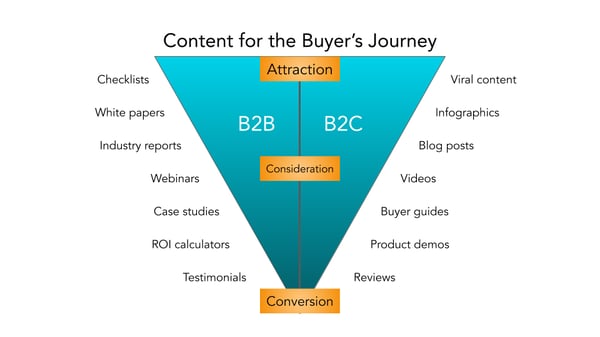
Before you start creating content, though, I recommend creating a business blog. (Don’t worry, growing your blog readership is easier than you think.) Your blog will house all the content you create and serve as a home base for readers to visit and subscribe to.
B2B Social Media Marketing
Believe it or not, B2B buyers and C-Suite executives can and do use social media when making a purchase. That’s right — social media marketing isn’t just for brands targeting individual consumers.
Many B2B companies struggle with social media marketing, though. It can be harder to use social media to connect with business customers, especially because (as we mentioned above) there’s typically a lengthier sales cycle and longer chain of command.
Honestly, B2B social media marketing might not be where you convert the greatest number of leads, and that’s OK. It likely comes into play near the beginning of your customers’ buyer’s journeys.
Social media is a powerful tool for building brand awareness, giving your company an online personality, and humanizing your business — all very powerful factors when it comes to marketing and connecting with potential customers. Like email marketing, social media is also a highly effective channel for sharing your content and enhancing your brand expertise, the latter of which we know B2B customers appreciate.
While your social media accounts might not convert as frequently as your content or email marketing, they’re just as important. In this case, followers are just as valuable — you never know when they might convert to leads or customers.
👉🏼 HubSpot Tip: Content shared by employee advocates can generate more engagement than content shared by brands. So, involve your employees in your B2B social media marketing strategy. Encourage them to create their own social media channels and share about life at your company. Create a culture account (like our @HubSpotLife Instagram) to show what’s going on at work, not just what you’re selling. You never know — this might attract strong talent, too.
B2B Marketing Trends to Watch in 2023 [New Data]
HubSpot’s Blog team conducted research to determine the challenges, opportunities, and initiatives that most B2B marketers are focusing on in 2023.
Let’s dive in.
1. Generating leads and traffic is the top challenge for marketers.
Top of mind for everyone this coming year is generating more traffic. Marketers surveyed in our 2023 Industry Trends Report cited generating leads and traffic as the top challenge they face, followed by hiring talent and pivoting their marketing strategy to round out the top three answers.
With changes on the horizon and a potential recession looming, it’s no surprise 17% of marketers are concerned with pivoting their marketing strategy. Throw in increased competition, and budget constraints and it’s safe to say marketers have their work cut out for them in 2023.
2. Marketers anticipate struggling to keep up with trends in 2023.
Marketing trends move fast, so it’s not surprising that marketers we surveyed cited keeping up with trends as a top concern heading into 2023.
Facing increased competition, leveraging CRM systems, and having to pivot marketing strategy rounded out the top five concerns on the horizon for marketers.
3. Social media marketers report ‘creating engaging content’ will be their number one challenge in 2023.
22% of social media marketers marked “creating engaging content” as the number one challenge they believe they’ll face in 2023.
With nearly all businesses utilizing social media vying for customer attention, competition is stiff. Businesses have had to evaluate what makes them stand out above the crowd and how they can better engage and target prospects. To make their best efforts shine, marketers have been utilizing a variety of formats, which we’ll dive into next.
4. Marketers leverage video the most.
When it comes to marketing formats, video is the preferred choice with 50% of marketers making it their go-to option. Images came in a close second with 47% of marketers utilizing this format.
Video also provided the most ROI when compared to other formats like images, blog posts, podcasts, and case studies.
It’s popularity isn’t expected to wane anytime soon. Video is expected to grow among new users in 2023 with 1 in 3 planning to leverage this format next year.
5. Influencer marketing was the trend leveraged most this year.
As a result of the pandemic, we’ve seen an immense shift in how consumers’ shop, with the majority now shopping online — and, in particular, purchasing products directly on social media.
It makes sense, then, that B2B marketers want to ensure their products or services are showing up on social channels with influencer partnerships.
Influencer marketing is projected to become a $13.8 billion dollar industry by the end of this year, and it’s showing no signs of slowing down.
Most B2B marketers — 71% — planned on investing more in influencer marketing this year, and likely was a wise choice as this avenue will continue to grow in 2023.
However, you’ll want to ensure you choose partnerships wisely. While it can be tempting to find influencers with massive audiences, many businesses have seen more success with micro-influencers, so be sure to do your research to determine which influencers have the most authentic connections with your desired audience.
6. Facebook leads in ROI, but other platforms are gaining popularity.
Our 2023 Trends Report found that not only was Facebook the most widely used marketing platform, but also provided marketers the most ROI. Out of the marketers surveyed, 18% stated they plan to invest in Facebook the most, followed by TikTok and YouTube tied with 16%.
While Facebook provides the most ROI, investment in other platforms is on the rise. YouTube is expected to see the most growth in 2023 with marketers with 91% of those using it planning to increase their investment.
Measuring ROI can be easier for some activities compared to others. For instance, it’s easy enough to track a social media advertising campaign’s ROI if you’re tracking sales made from an ad placed on Facebook. Sales is a tangible outcome, and Facebook’s Ad Manager enables you to easily track ROI from your efforts.
However, other activities can be more difficult to track. Analyzing which pieces of social or blog content resulted in sales, for instance, can be a more arduous and convoluted process.
To combat this challenge, take a look at How to Calculate ROI in Marketing [Free Excel Templates].
Additionally, consider A/B testing various marketing activities and tracking ROI to determine which platforms traditionally have the biggest ROI for your business. For instance, most marketers find the highest ROI from Facebook — but this could vary for your brand or business needs.
7. The number one goal for marketers in 2023 is increasing revenue.
Understanding your big-picture goals is imperative for creating an effective marketing strategy for 2023 — so it’s likely helpful to know what other B2B marketers’ plan to focus on next year. .
Looking ahead, B2B marketers’ top priority is to increase revenue and sales, knocking increasing brand awareness down to the third spot from last year.
Top marketing goals:
- Increase revenue
- Improve customer experience
- Increase brand awareness
- Increase engagement
- Improve brand loyalty
Roughly half of B2B marketers reported that ‘increasing brand awareness’ was their number one goal in 2022.
Brand awareness is critical for fostering trust, long-term loyalty, and brand equity. It makes sense, then, that so many marketers feel it’s critical for long-term success.
Additionally, Chief Evangelist at Terminus Sangram Vajre says he predicts that data collection will become a major priority for brands.
As he puts it, “The quality of our campaigns and initiatives will increasingly rely on our CRM, CDP, and 3rd-party sources to help create stylized, targeted, and convertible marketing initiatives. And since CMOs are increasingly held to ROI numbers, we have to up our game.”
To consider how you might manage your data in a more efficient, sustainable way, take a look at Everything You Need to Know About Data Management.
Additionally, if you’re unsure how you can continue tracking your audience without using third-party cookies, read 7 Marketing Alternatives to Tracking Cookies.
8. This year marketers stopped leveraging podcasts and audio content, while others stopped implementing VR and AR.
As important as it is to learn what marketers plan to do , it’s equally vital to learn what they plan not to do. This can help you identify your own guardrails, and ensure you’re sticking to the most efficient marketing strategies, rather than wasting time and resources on all of them.
HubSpot’s Blog Research found 25% of marketers plan to stop leveraging podcasts and audio content; followed closely by 23% who plan to stop leveraging VR and AR.
This doesn’t mean these activities are inefficient, but it does suggest that some survey respondents found the time, effort, and resources required for each of these efforts wasn’t worth it. Ultimately, it depends on your audiences’ preferences.
If your audience doesn’t enjoy consuming business content on podcast or audio formats, then re-consider investing in these initiatives.
However, audio content isn’t going anywhere — so if you haven’t already, you might consider testing various audio formats in 2023 to see how they perform with your audience. If you’re unsure how to get started, take a look at Everything You Need to Know About Starting a Podcast or Clubhouse vs. Podcasts: Which Should Marketers Use? [Data + Expert Tips].
9. Philanthropy is best when it’s genuine.
Carla Andre-Brown, a Content Marketer at Mailbird told me, “Brand-building activities will look to work with social and environmental causes in a format that is ongoing and builds recognition for both parties. Marketers will need to be especially mindful of the way they present their company, to avoid being accused of having poor intentions.”
“For instance,” Andre-Brown continues, “a company using the Pride theme each summer without having policies that protect LGBTQ2IA+ employees is called ‘Rainbow washing’. To ensure this work is well-received and has an impact, marketers should listen to their communities’ suggestions and look for sustainable changes that everyone can benefit from.”
B2B Marketing Examples
A B2B marketing approach that works for one business may not work for another, but that’s not to say we can’t learn something from the pros. Here are eight B2B marketing examples of businesses who did it right.
1. Social Media Marketing: Adobe
TikTok can seem like a difficult platform to stand out as a B2B brand, but some companies have managed to attract thousands — if not millions — of viewers to their videos through high-quality content and an understanding of the app.
Take software company Adobe, which has 262.3K followers and 2 million likes on its TikTok account.
When Adobe first joined the app, the company’s second video got over 2 million views. The video asked its audience, Who is a creative TikToker we should know about?, which encouraged high audience engagement.
Adobe succeeds on the app because it creates engaging content specifically catered for TikTok’s audience. All Adobe’s videos are short, entertaining, and easily digestible.
Take the following example, which has over 370K views and highlights how user @emilesam used Adobe’s After Effects edit to create a fighting sequence against himself.
The brand does a good job highlighting its products in a fun, non-promotional way. Both consumers and businesses can see a clear connection between using Adobe’s products and finding success on TikTok — which makes this a great example of B2B marketing.
2. Content Marketing: Shopify
Ecommerce company Shopify produces many different types of content resources, such as a blog, business courses, and community events. But one content avenue that helps the brand stand out is its podcast, aptly titled Shopify Masters: The ecommerce business and marketing podcast for ambitious entrepreneurs.
The podcast focuses on inspiration stories from entrepreneurs, and offers practical tips for starting an online business on Shopify. Episode topics range from “Disrupting the Soda Industry with a Healthy Spin” to “How Masks For Dogs Landed a Deal on Shark Tank”.
Offering so much valuable, interesting content for free is a fantastic example of effective B2B marketing, which should always provide value before it tries to extract it.
3. Digital Marketing: Mailchimp
Mailchimp’s homepage is easy to navigate, clean, and focuses entirely on its customers’ pain points.
Consider, for instance, the first large text you see when you click on the page: “Get down to business and grow sales”. The smaller text below it reads, “Engage your customers and boost your business with Mailchimp’s advanced, yet easy-to-use marketing platform.”
The language focuses on the customer, and how Mailchimp can help the customer reach their goal: To grow their businesses.
Additionally, the website offers a banner at the top of the page that enables customers to choose in which language they’d prefer to view the website. Even the company’s Products navigation menu includes how the product can “Get Your Business Online” and “Market Your Business”.
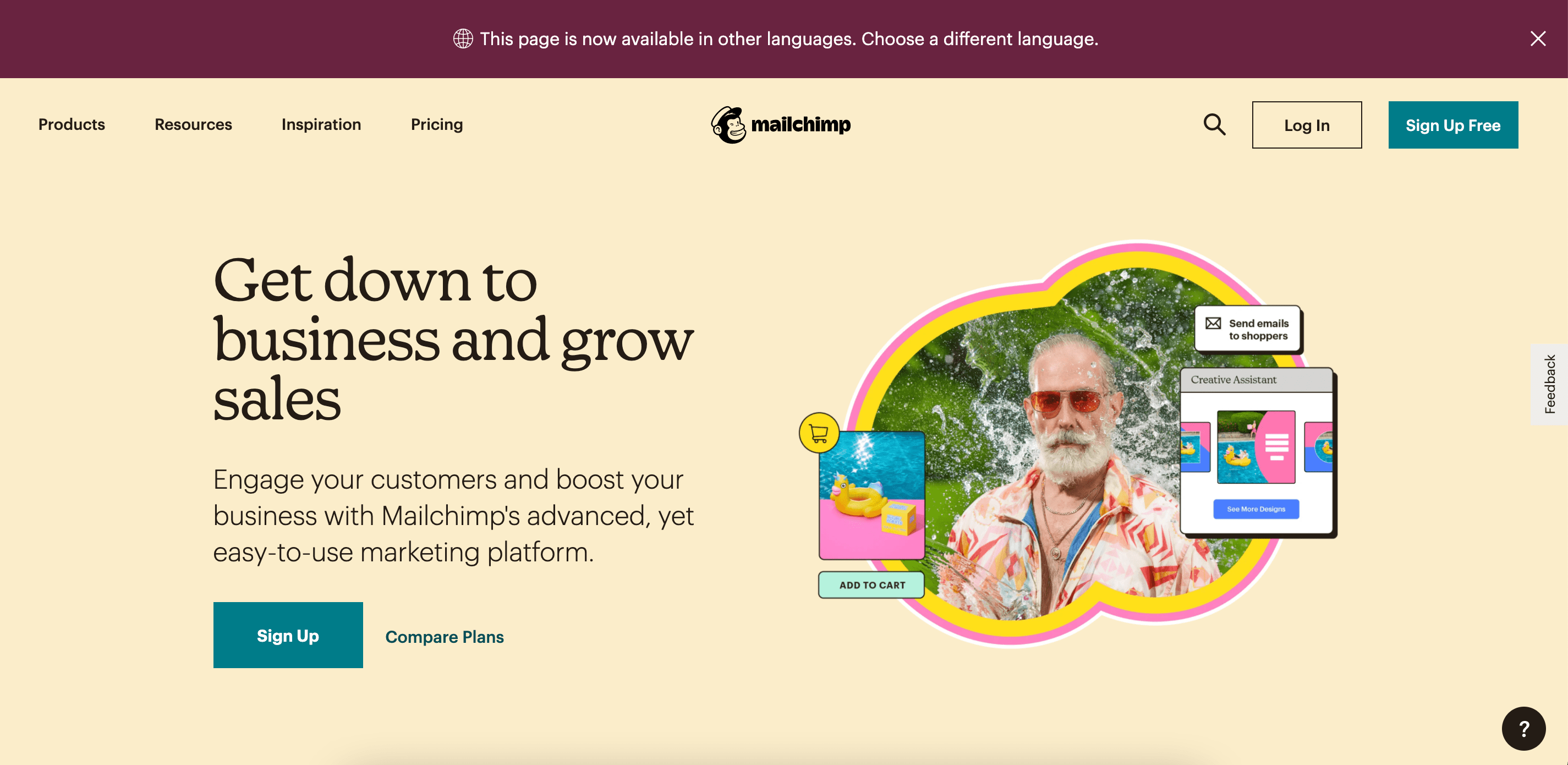
Ultimately, the company demonstrates how much they value each of their customers by tailoring each piece of content towards its customers’ unique challenges.
4. Client Testimonials: Venngage
Venngage took its positive client testimonials and sprinkled them throughout its website. This social proof lets prospects know that you have a track record of reliability, and have delighted previous customers beyond expectation. Not only that, but sharing testimonials can have a big impact on potential consumers in the Consideration and Decision stages.
After all, 98% of consumers read online reviews for local businesses, which is up from 81% in 2019, so using client feedback is a great tool to attract new ones.

5. B2B SEO: TravelPerk, Google
A B2B buyer spends 27% of the time in the purchase journey independently researching online, potentially using at least one search engine during the online research. It’s worth the time and money to invest in making sure other businesses can find you with ease.
TravelPerk displays a diverse range of paid search and SEO. An impressive SEO strategy is its use of topic clusters and sub-topics for reaching its target audience. TravelPerk ensures that search engine pages like “business travel expenses” have a paid ad leading to its website, or high-ranking blog content providing information travelers are looking for.
6. Inside Influence Marketing: IBM, Influencer and Employee Advocacy Program
IBM Systems business group has seen the growing importance of employee voice and the rise of employee influencers as a strategy in B2B marketing.
In the words of Ryan Bares, Global Social Programs Lead, he states, “In the B2B marketing world, we’ve all come to understand that buyers trust individual voices more than formal marketing and advertising messages, so finding ways to optimize influence internally is becoming a key area of focus.”
Leveraging employees in your company that have an affinity for the industry, vast knowledge of trending topics and your brand, could be key in building new relationships in the industry.
7. B2B Referral Program: Blackbaud, Blackbaud Champions
Blackbaud offers an incredible B2B referral program that incentivizes current customers to become product advocates — Blackbaud Champions. Champions are encouraged to share their insight into how the implementation process works, what it’s like to work with the team, and how Blackbaud solutions have helped you advance their mission.
“When you share your experiences and expertise and help us spread the word about our products and services, we’ll reward you with benefits only available to Champions. By providing your feedback, participating in activities like reference calls and case studies, and sharing educational content and events on social media, you’ll earn Reward Points in the Blackbaud Champions Hub which you can redeem from the Champions Rewards”
These points are what Champions strive to redeem, as they include incentives like discounts, complimentary passes, gift cards and VIP experiences, and more.
Referral programs are a great way to kindle customer loyalty and have advocates spread the word about your business through the network.
Invest in B2B Marketing and Reach Your Business Customers
Marketing isn’t effective unless you keep your audience in mind, and no other audience is as fickle and critical as business customers. Your marketing should communicate how your business can help theirs, and if it doesn’t, you can redirect your B2B marketing strategies to reach them.
Editor’s note: This post was originally published in March 2021 and has been updated for comprehensiveness.
![]()



![→ Download Now: Free Product Marketing Kit [Free Templates]](https://no-cache.hubspot.com/cta/default/53/08b5e1f4-5d26-405b-b986-29c99bd0cb14.png)
